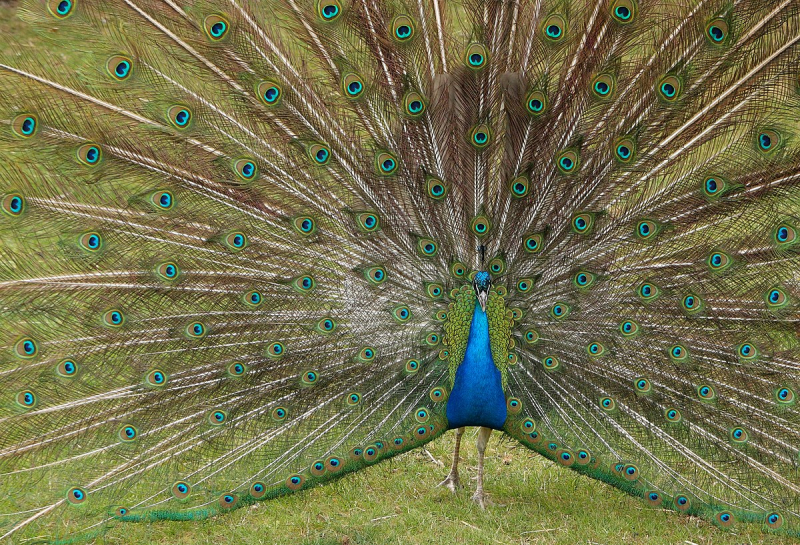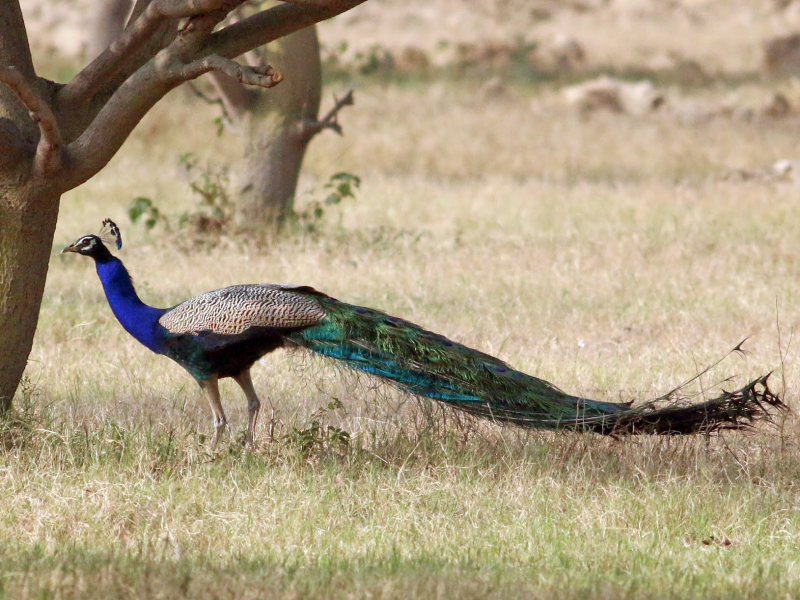Indian Peafowl

The Indian Peafowl (Pavo cristatus), also known as the common peafowl, and blue peafowl, is a peafowl species native to the Indian subcontinent. It has been adopted by numerous other nations. Even though peafowl of either sex are frequently referred to as "peacocks" in casual language, male peafowl is known as peacocks and female peafowl as peahens. The bird is celebrated in Hindu and Greek mythology and is the national bird of India. The Indian peafowl is listed as of Least Concern on the IUCN Red List.
An obvious kind of sexual dimorphism is present in Indian peafowl. The peacock is well recognized for its long train of extended upper-tail covert feathers that contain colorful eyespots. It has a brightly colored, primarily blue fan-like crest of wire-like feathers with spatula tips. During courtship, these stiff feathers are lifted into a fan and quivered. Peacocks can still fly in spite of the size and length of their covert feathers. Peahens lack the train and have a dark brown coat, a white face, and an iridescent green lower neck. The Indian peafowl spends much of its time foraging for berries and grains on the ground in open forests or on land that is being farmed. They also hunt snakes, lizards, and small rodents.











